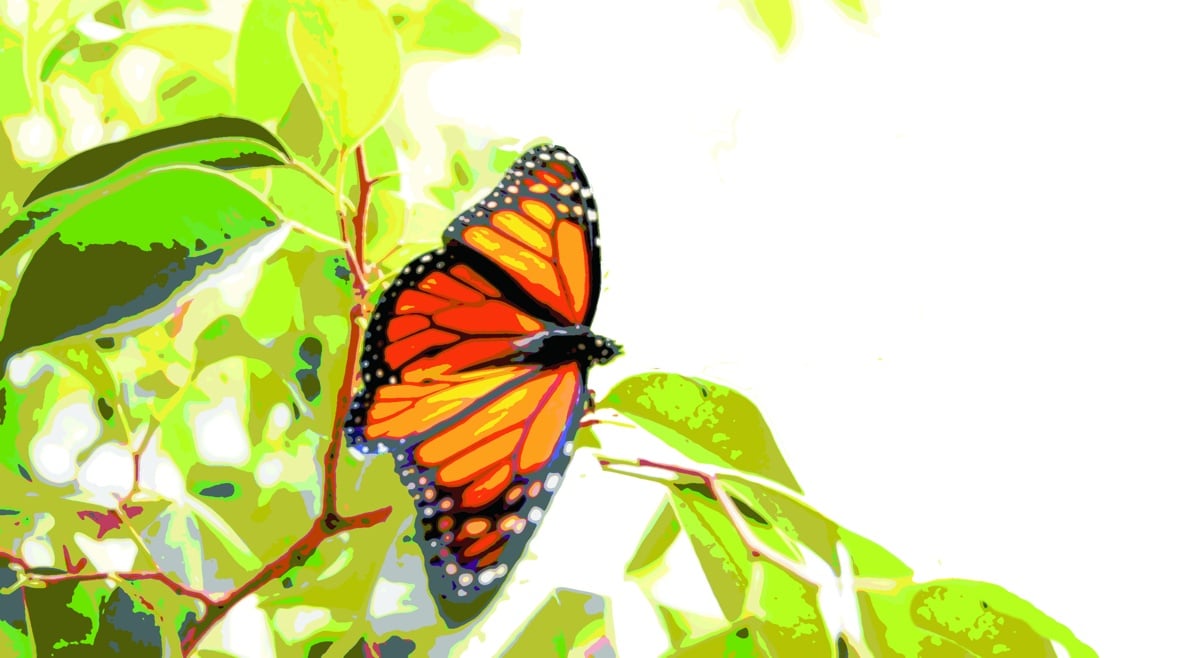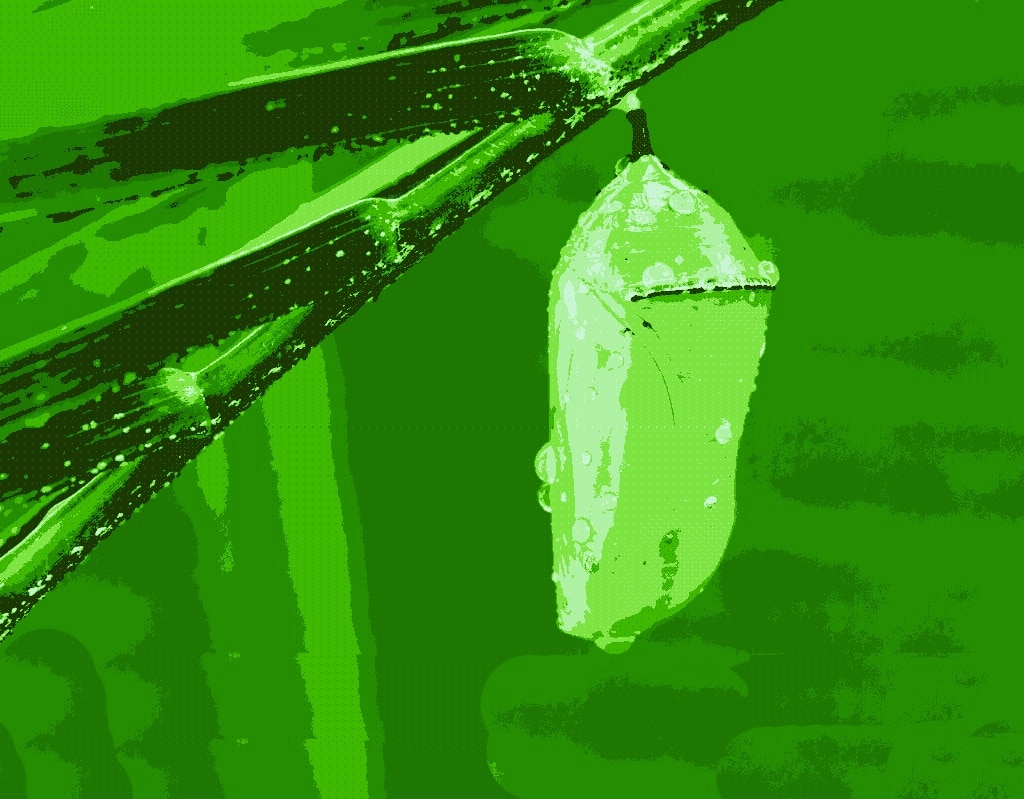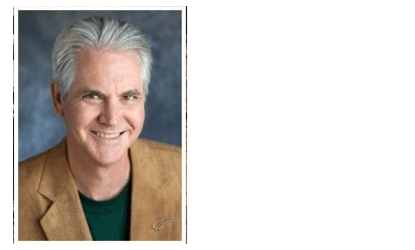
Looking around the world today, we find many reasons to be frightened and confused. Oddly enough, that is exactly the reason why we should be hopeful.
The world is changing rapidly. It is actually changing for the good, but we think it is changing for the worse. Why is that?
Change – even good change – is stressful, even frightening. When we are afraid, our rational minds turn off. Our fight or flight instincts kick in and we instinctively start looking for threats, while ignoring the rest.
Engulfed by confusing changes, and seeing both real and imagined dangers around us, we long to return to a time before the changes – a time that felt better, safer. But it wasn’t better or safer. It was simpler.
And what is simpler, than childhood – a time when we had no responsibilities; when all major decisions were made for us; when powerful people told us what to do and what to think, and the people close to us were just like us?
In the face of overwhelming change, it is only natural, then, that a large part of humanity longs to return to a childlike state of dependence. But that is not possible. Humanity as a whole is actually in the middle of its chaotic and confusing adolescence, and there is no escape but to soldier on into the relative calm of collective maturity.
So, in short, our current fear and confusion is a good sign, because it signals our collective transition from childhood through adolescence into maturity.
When we reach this collective maturity, we will be able to rapidly solve the many problems that our resistance to change has caused, because with maturity comes unity, responsibility and calm rationality.
That is why we should be optimistic rather than fearful. And it is this optimistic, hopeful perspective that will allow us to see past the threats that face us. The truth is that the changes we are going through now are teaching us everything we need to know in order to move forward to a brighter future.
The World Is Changing
Most people understand that the world is changing. But unless we stand back and consider it from an historical perspective, we really don’t appreciate how fast things are changing. If we say that humans first started developing tools about 65,000 years ago, then the last 150 years is equal to less than one day in our history.
For most of human history, change took place over centuries, not over the course of a single lifetime. An individual could go their entire lifetime never leaving their village, never seeing a person of a different color, hearing a different language, or even conceiving of a different religion. Since they couldn’t read, they wouldn’t even know that their unchanging slice of reality was not the only way to live. For many people – even in the developed world – much of that was still true right up until a few generations back.
Remember how, when you were a child, summers seemed to last forever, and now they fly by in the blink of an eye? Humanity has lived through a long, slow 60,000-year summer. But it is time to grow up.
Starting in the late 1800s, things started to change at a rate that people began to notice. Global travel and communication became much easier. Because of all of this cross-cultural interaction, knowledge began to increase rapidly. In fact, all of the knowledge ever gathered in the world up until that point doubled in a single lifetime after that. Imagine that. It doubled again in the next 30 years, and doubled again, and again, and again, until it is estimated that the amount of information in the world doubles every day.
We have exponential growth. Exponential change. Exponential fear. Exponential possibilities.
Our fear of change inclines us to look at all of the damage we’ve done to ourselves and the planet in the last 200 years. But an objective observer would note that in that time:
Extreme poverty has gone from 90% to 9%.
Literacy has gone from 20% to 87%.
Life expectancy has more than doubled.
And what happens when people have enough food to eat, the ability to read, and live long enough to have rich experiences? They have the time, energy and ability to think for themselves. Along with the idea that people can think for themselves comes the radical notion that they can also govern themselves. 200 years ago there were only a handful of democracies. Now there are about 100.
Thinking for yourself, making your own decisions, and wanting to govern your own personal life sounds a lot like what happens when you move from childhood to adolescence, right? You aren’t satisfied simply accepting your parent’s answers. You want to come up with your own. And when parents treat you as though you were still a child, you start rebelling against the forces that want to continue to control you.
“Not unlike the individual who passes through the unsettled yet promising period of adolescence, during which latent powers and capacities come to light, humankind as a whole is in the midst of an unprecedented transition.” — Shoghi Effendi
If adulthood had an on/off switch, it would be easier. Both you and your parents would see that you were now an adult, and your behavior would reflect your new level of maturity. But the transition from childhood to adulthood is slow and messy, and confusing for everyone. You can behave with maturity for weeks at a time, then slide backwards and do something truly sophomoric. You can want to be completely independent one day, and then go running to mommy and daddy to give you money or fix your problems the next. There is a constant push/pull between the childish side and the mature side of the transition.
On a global level, this means that we can have major progress in the spread of democracy, in global cooperation and economic interdependence on one hand, and the rise of strongman dictators telling us that they can return us to the safe predictability of the past on the other. We can go to the moon and have a Flat Earth Society. We can eradicate smallpox and have vaccine deniers.

But don’t worry. There may be a push and a pull, but the future always wins in the end.
Perhaps another metaphor will help. We could think of a caterpillar as a baby butterfly and the butterfly as the adult. What comes in between is not a maturing caterpillar, nor is it a small butterfly. It is a bag of goo that is neither one nor the other. What goes on inside that bag of goo is messy, but necessary.
Humanity is currently in the goo stage. We can’t see how that goo will ever turn into something beautiful, but we know it will. There are forces at work in the background that are rearranging our component parts, setting the stage for the old shell to split open and something new, different and better to emerge.
So what does a mature human race look like? What would it mean for humanity to fly?
A world in flight is a world where people expect and accept change. They are aware of and respect other cultures. They understand the inter-connectedness of the world. And perhaps most important, they are not afraid to think for themselves instead of being led by powerful politicians and clergy.
“Thinking is the hardest work there is, which is probably why so few engage in it.” – Henry Ford
With the attributes of maturity at hand, a world in flight will be able to harness its exponentially growing body of information to solve problems that seem totally beyond our capacity today.
Even while being engulfed in fear and confusion, we have already cured hundreds of diseases, found a way to feed 8 billion people, created a global means of instantaneous communication, lifted billions out of extreme poverty and educated the majority of the planet. We have also spread democracy to scores of countries, and created a framework for global cooperation. And we have not yet spread our wings.
Fostering Maturity
A mature mind is distinguished by the ability to think abstractly: to understand symbols and metaphor, and to look beyond the literal and concrete. The growth of humanity into maturity is, therefore, not a technological, educational, or even political process. It is, at its core, a spiritual transformation.
When I say that we no longer need to turn to the clergy to tell us what to think, I’m not suggesting that we turn away from religion itself. Quite the contrary, the seeds of mature thinking as a spiritual process can be found within the scriptures of every great religion. However, it is up to us to read that scripture for ourselves, with a new mind and an open heart, to find those seeds and plant them in our own souls.
Religious scripture is full of symbols, metaphors, and abstract ideas. When the human mind reads scripture with an open heart, it will constantly be challenged, stretched, and expanded as these abstractions pull at the edges of what was previously considered possible. If this curiosity is not held back by fundamentalist religious leaders, it will eventually grow into its mature potential. That is why religion is the greatest tool for expanding consciousness – but only if we study it for ourselves.
“Divine things are too deep to be expressed by common words. The heavenly teachings are expressed in parable in order to be understood and preserved for ages to come. When the spiritually minded dive deeply into the ocean of their meaning they bring to the surface the pearls of their inner significance.” — ‘Abdu’l-Bahá
Once we move beyond a literal, concrete understanding of religious scriptures, we discover in them a common core. Every religion inspires us to be more loving, more peaceful, more unified and more just – the precise qualities we need in order to to build a better world.
Right now, the greatest obstacle to the collective maturation of the human race is our failure as individuals to independently search for truth. We turn to religious and political leaders to guide us, and end up distracted by divisive dogma or seduced by material or political solutions to problems that are essentially spiritual in nature.
So What to Do?
If you consider yourself one of the spiritually mature, you might be asking yourself what you can do to move humanity forward.
Well, consider an adolescent. You can’t drag them kicking and screaming into adulthood. What can you do? You can do what the great religions tell us to do. You can love them. You can listen to them. You can understand their fear and not judge them for it. You can let them rail against all that they fear and hate, and then call them back to love.
“…some are mere children; with the utmost love we must educate them to make them wise.” — ‘Abdu’l-Bahá

Every religion has taught us to love our enemies, to forgive everyone and to see with our own eyes and hear with our own ears. During humanity’s childhood, only a few believers had the maturity to follow this guidance. As humanity matures, however, more and more people will be attracted to this path if it is offered to them with love.
And that is the key. We must attract people into maturity, not hate them or punish them for their youth. If one person doesn’t respond to your positive message, move on to the next, and know that a seed planted with love will eventually take root.
When you are able to visualize humanity as an adolescent child needing to be loved into maturity, then you will have a clear vision of what you need to do. Then you will find yourself looking forward to the future with a sense of purpose; energized with hope and joy.
©Justice Saint Rain
This article is available as a printed pamphlet at Interfaithresources.com


VERY timely! Thanks, so much!!!
We’ve needed this for a long time. I’ve tried to share this in presentations, but don’t know that I’ve succeeded. This will help a lot!